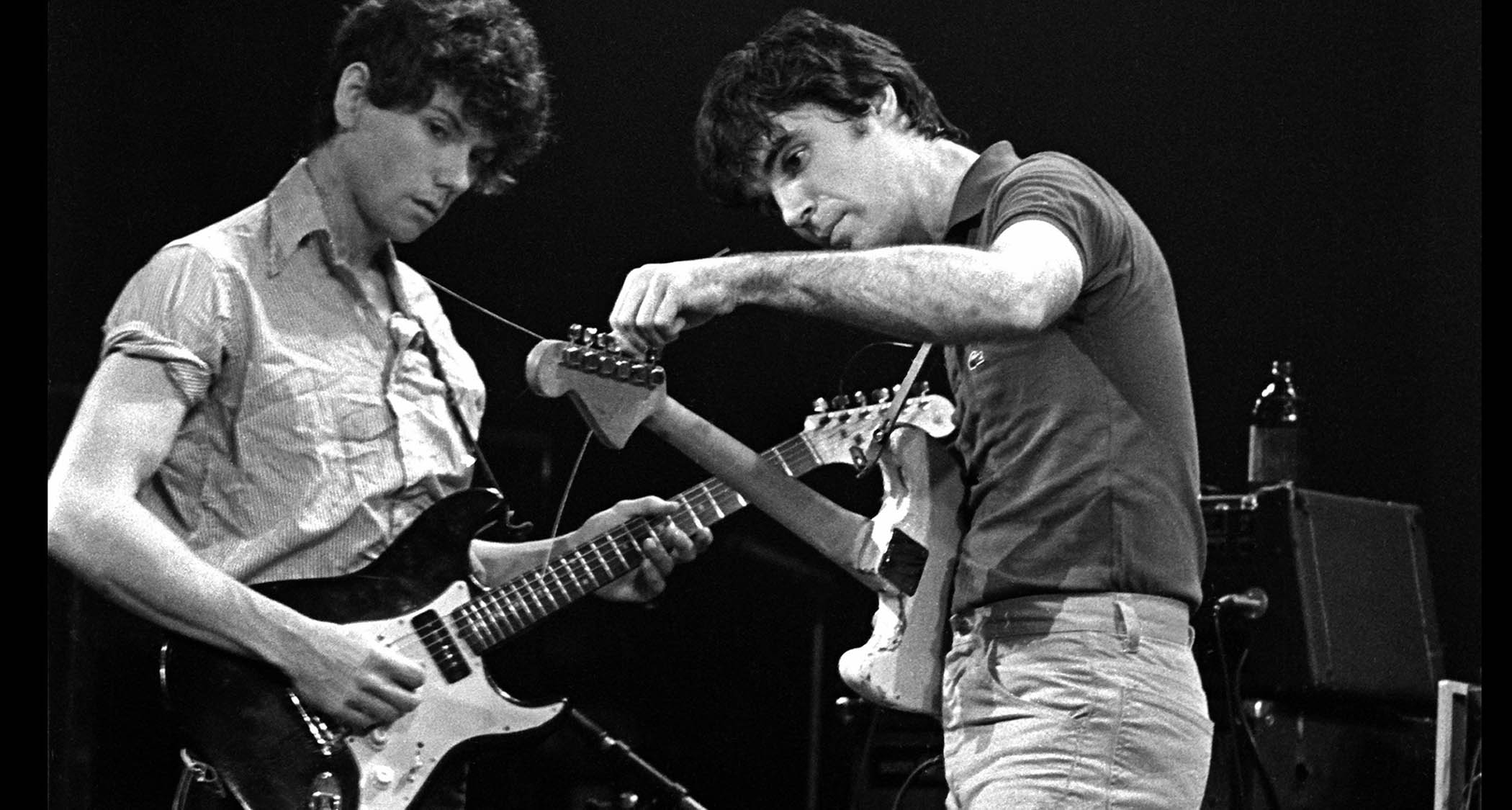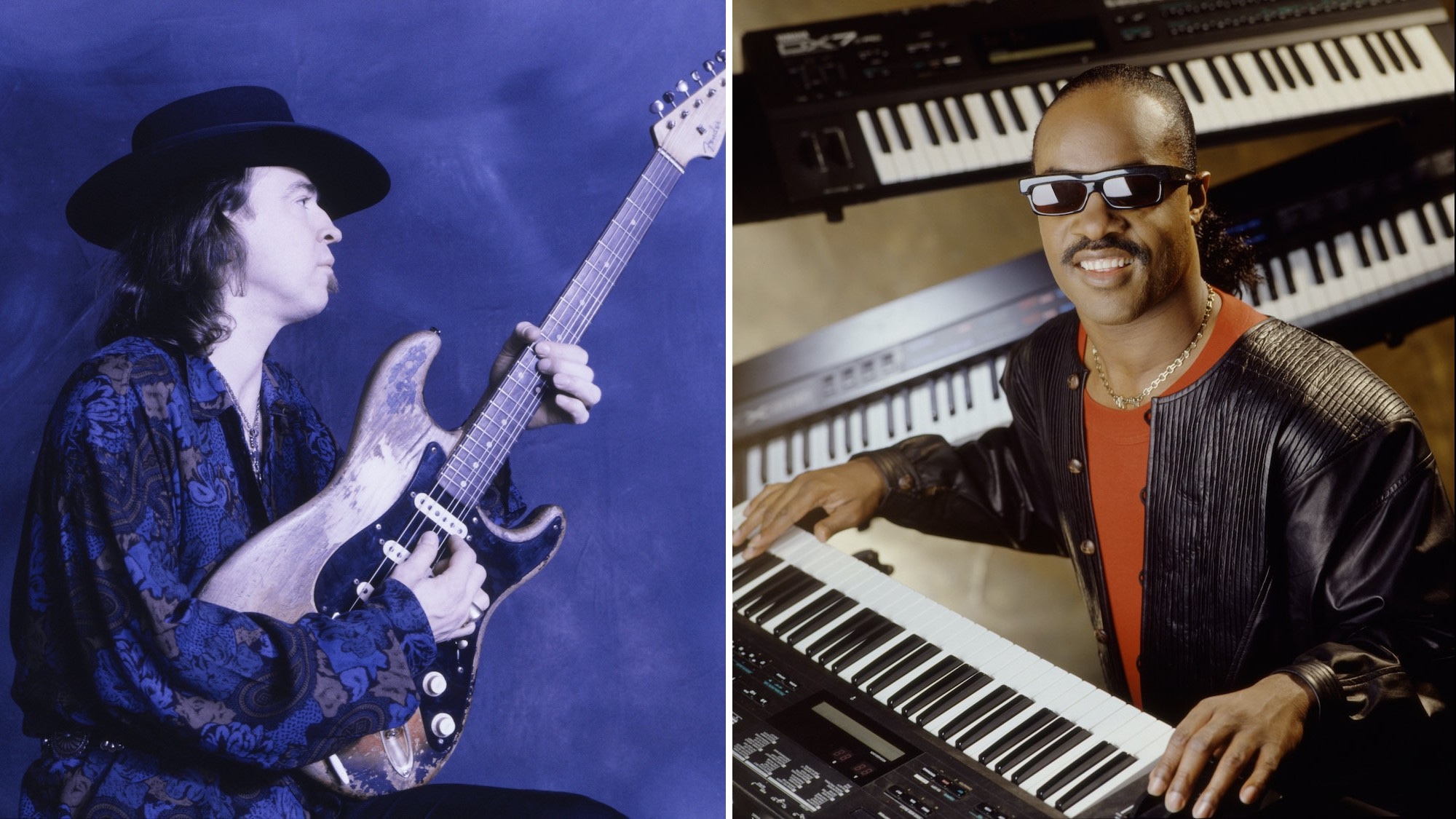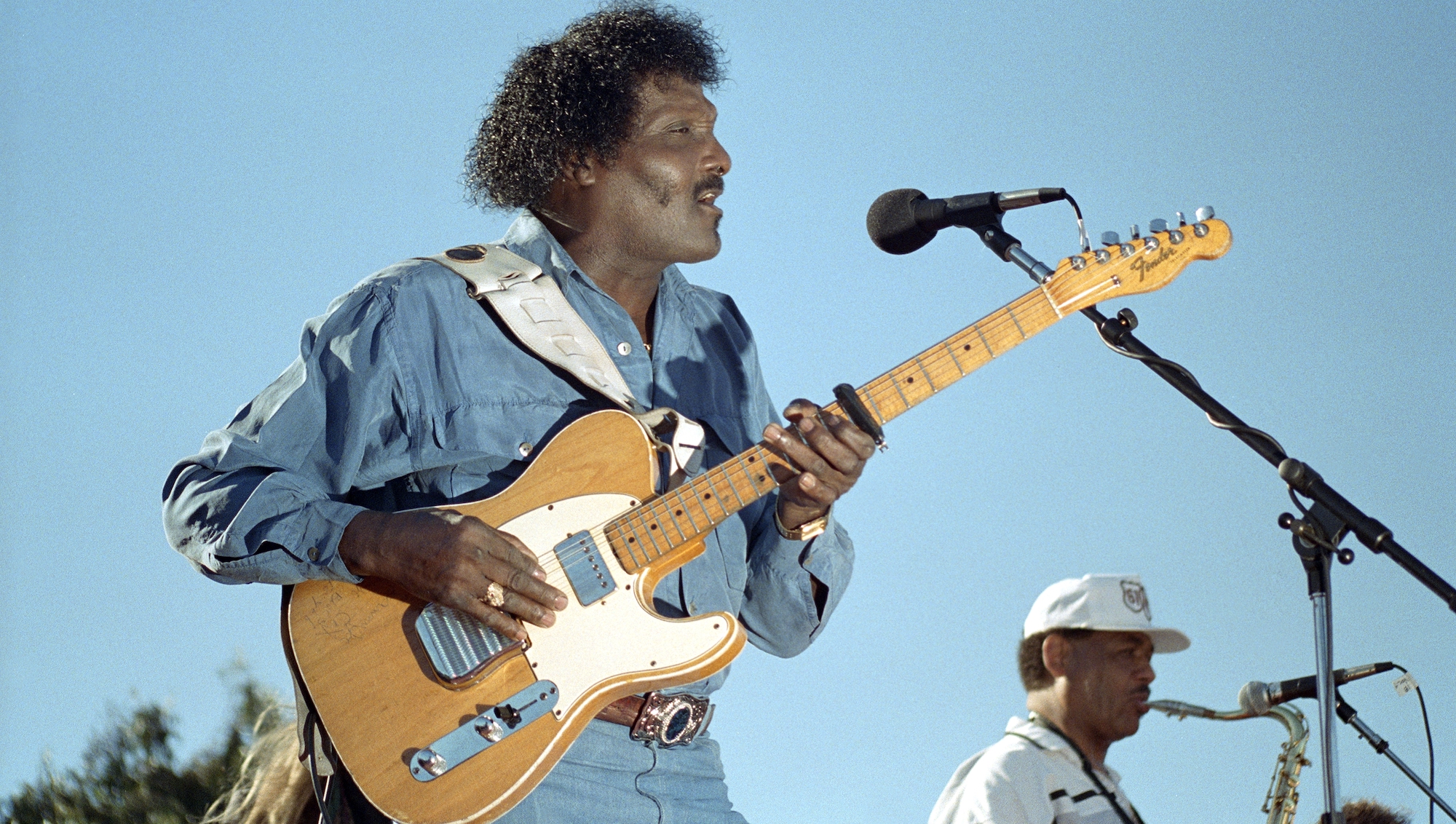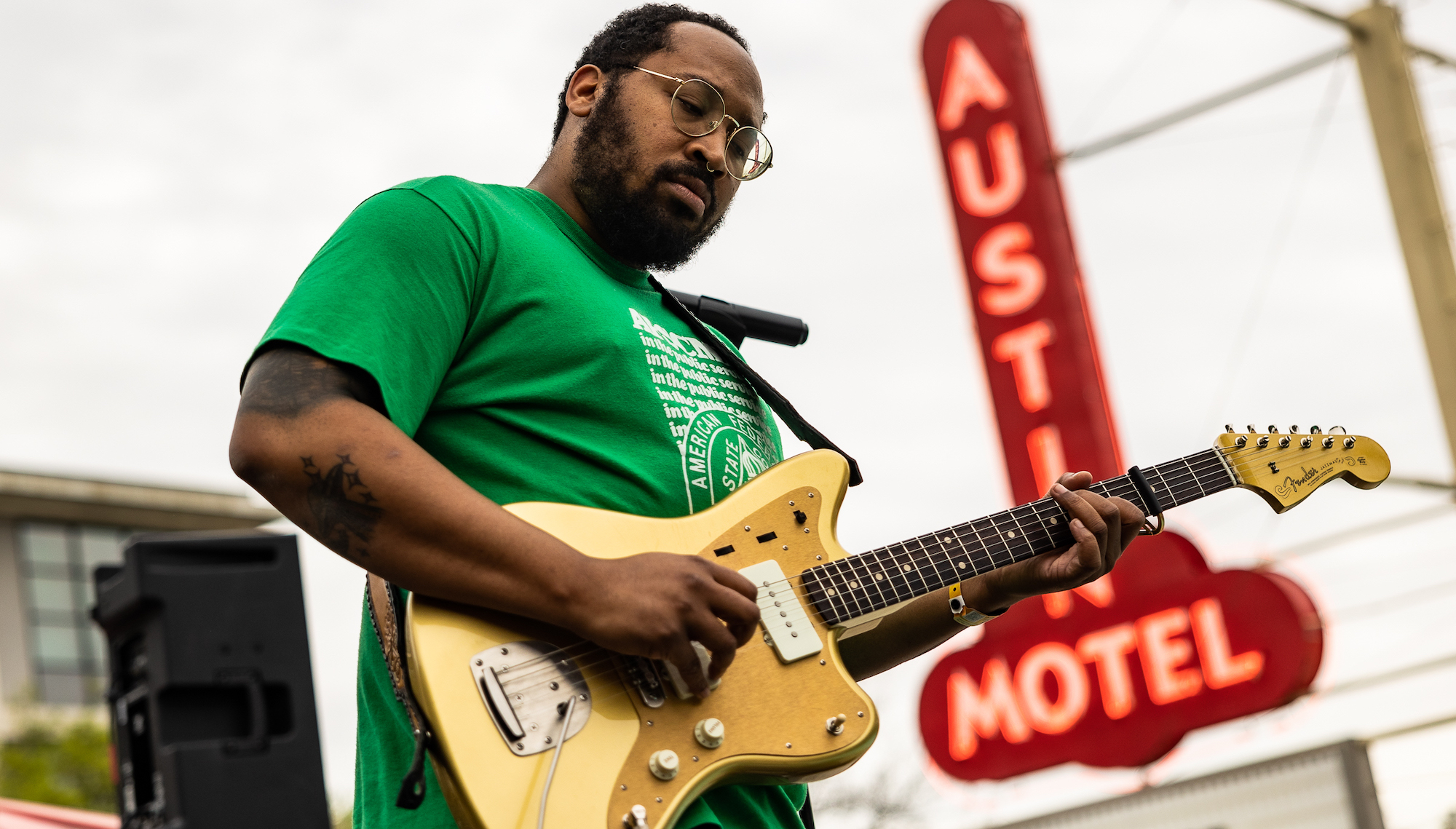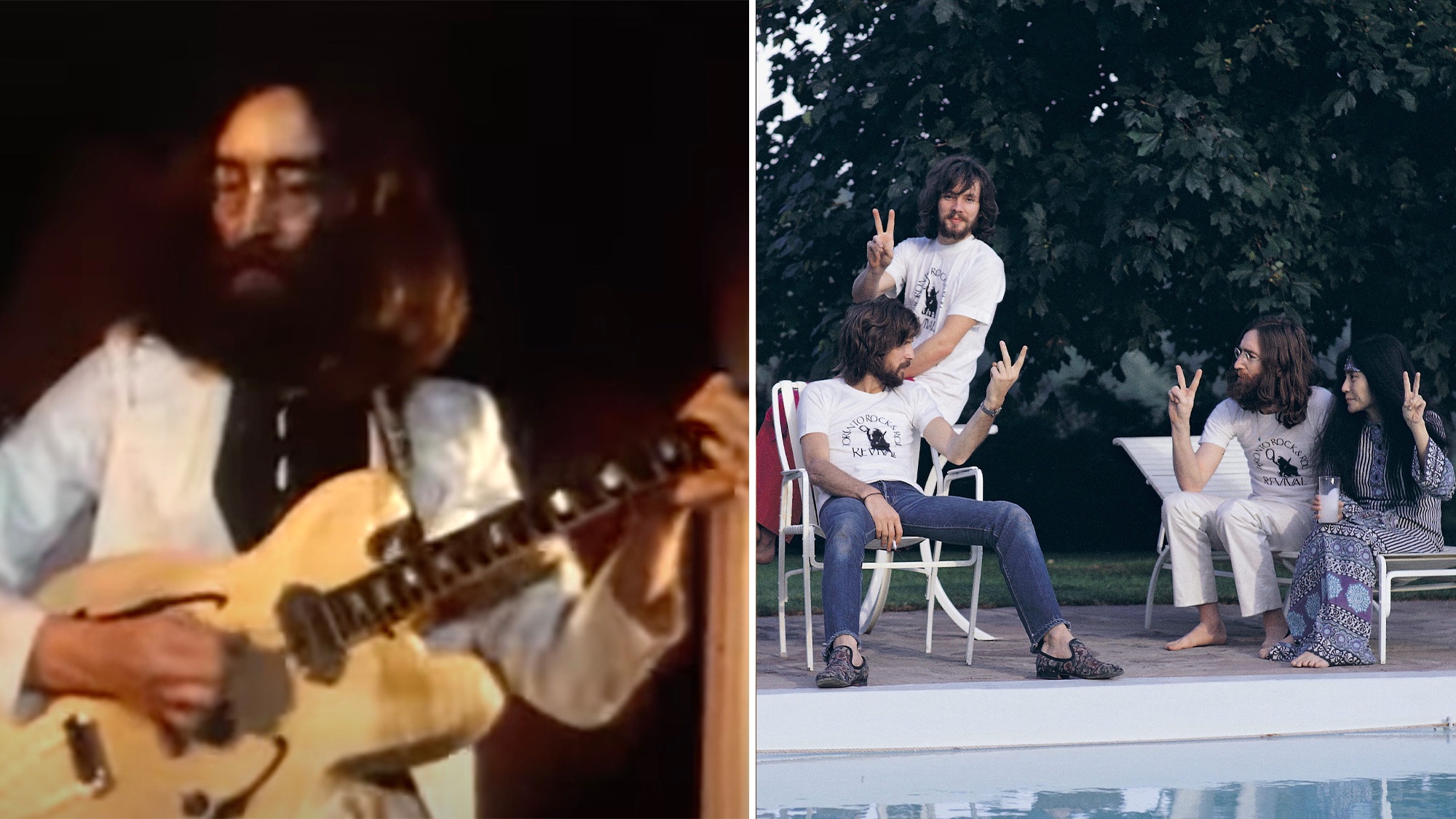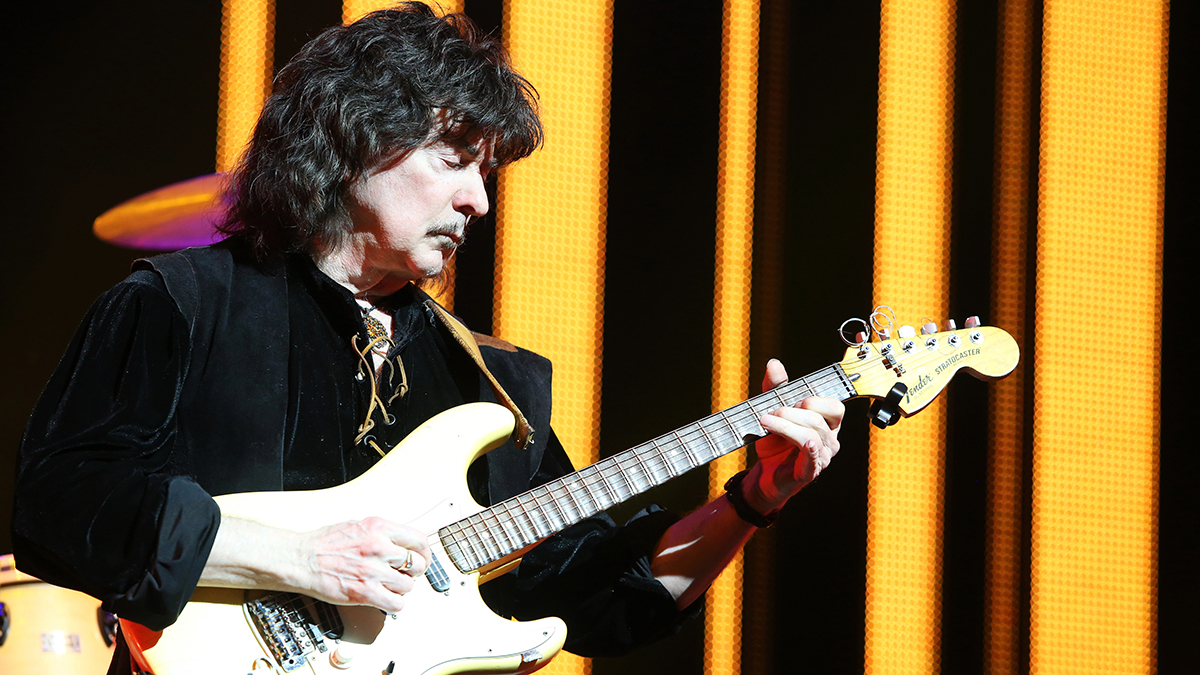Classic gear: Gibson CF-100E
This cutaway electric flat-top set a template for modern acoustic design
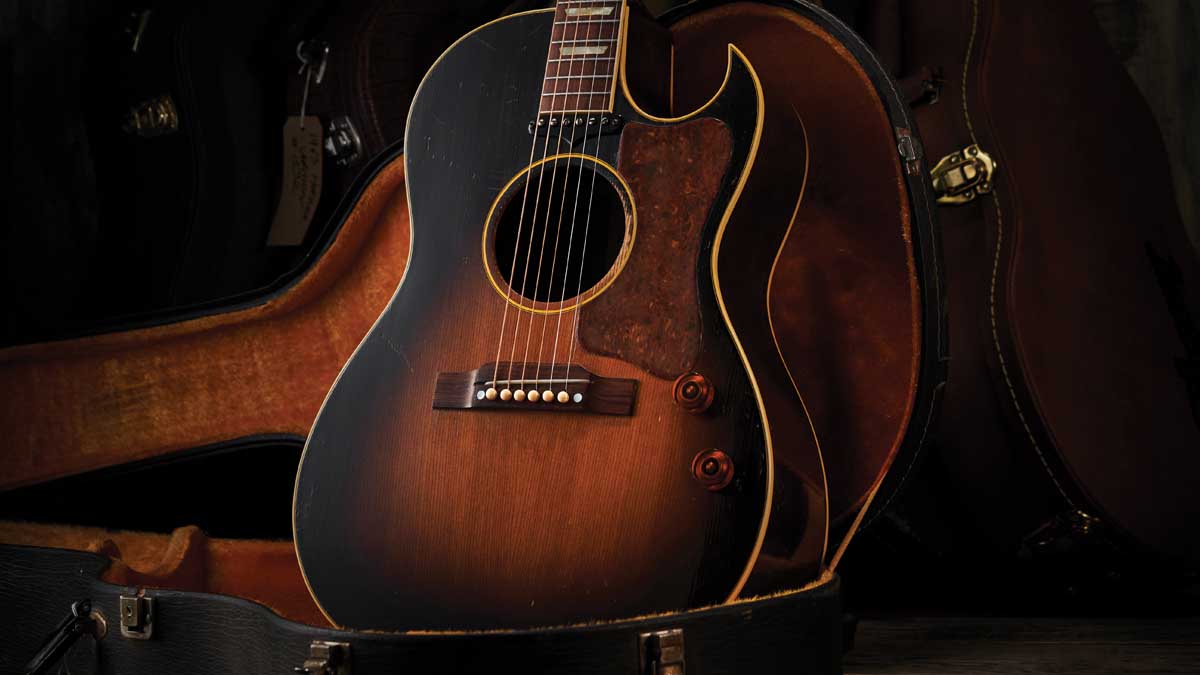
Something of a hidden gem on the vintage market, the CF-100E has attracted the attention of several prominent musicians over the years including Jackson Browne and Bob Dylan, while, more recently, J Mascis of Dinosaur Jr was snapped with a CF-100E when we caught up with him on tour last year following his Elastic Days release.
1942 LG-2 released (same 141/8-inch body width)
1950 CF-100 released (c. 325 shipped)
1951 CF-100E released; 19-fret neck
1952 Peak production (c.250 shipped)
1953 c.165 shipped
1955 20-fret neck; c.100 shipped
1959 Discontinued (c.55 shipped)
1994 Centennial Collection 1950 CF-100E (limited run of 100) 2007 Custom Shop CF-100E (maple body)
2014 Custom Shop Tamio Okuda CF-100E (Japan)
“Gibson made them in the 50s. It’s the same neck as a Goldtop – that’s why I got into them,” J told us. “When Gibson did their [Centennial Collection] anniversary series, they had a different acoustic every month for a year and I got a [1994 Gibson 1950 CF-100E]. That was the first one I got.
“Now I have five altogether, with that newer one. Two are CF-100s and the others are CF-100Es… Most of the [Gibson CF-100E] guitars are in Japan and they’re expensive over there. [Japanese singer-songwriter Tamio Okuda] plays one. He’s got a signature model with Gibson.”
The CF-100 cutaway flat-top appeared in 1950, shortly before the release of its electrified sibling, the CF-100E, the following year. The main difference between the two, aside from electronics, is that the soundhole of the CF-100E is positioned sightly further away from the neck to make room for its P-90 single-coil pickup.
The basic specs of both are very similar to Gibson’s inaugural LG-series small-bodied flat-top, the LG-2 (released earlier in 1942) namely: a 14 1/8-inch wide solid spruce top with X-bracing and a sunburst finish; a solid Honduras mahogany back and rim; a one-piece, 24¾-inch scale length mahogany neck with a 14th-fret body join; and a Brazilian rosewood fretboard.
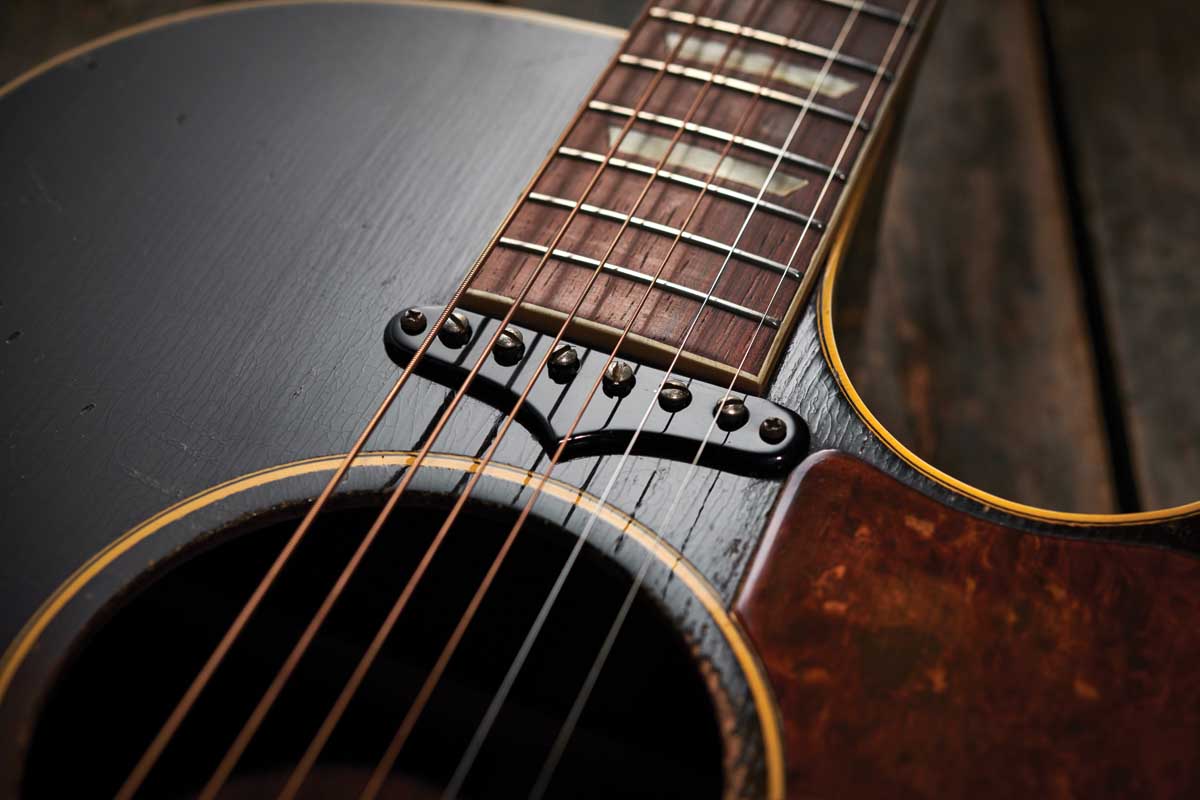
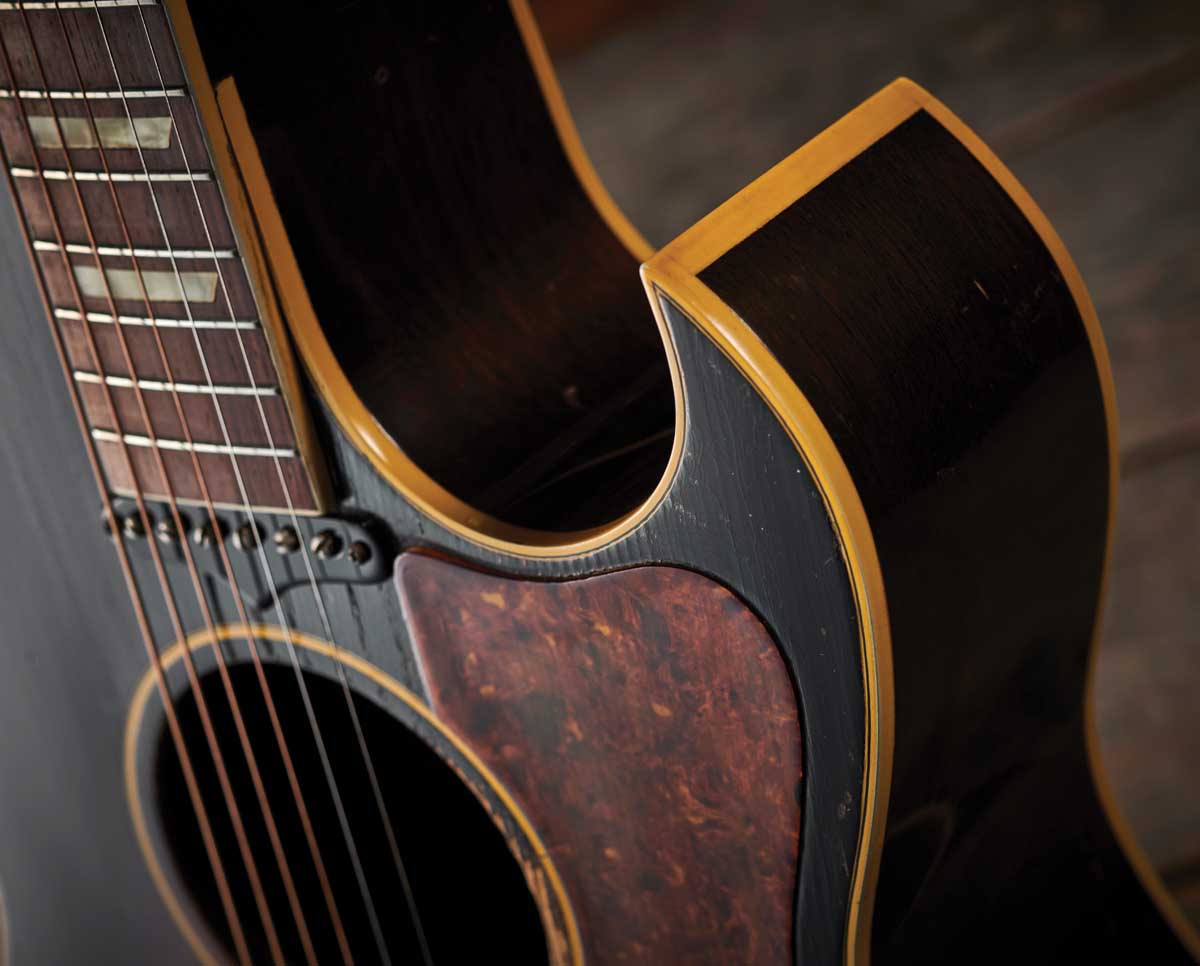
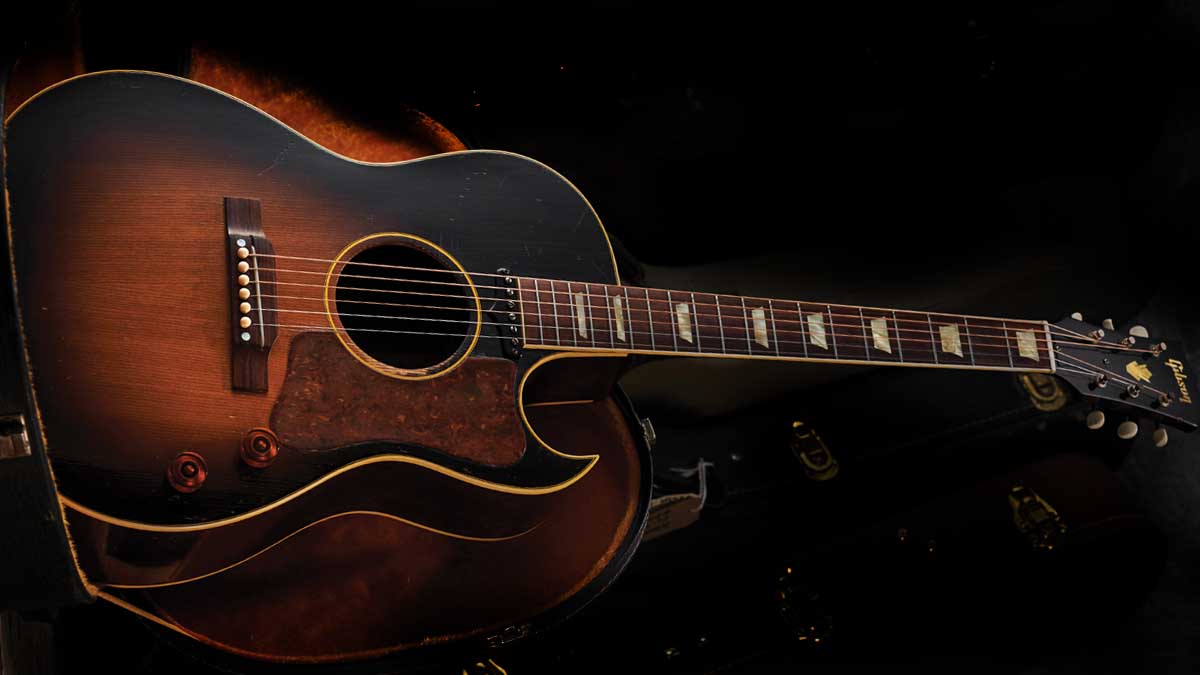
While the CF-100/E guitars evolved directly from the LG series instruments, their trademark Florentine/sharp cutaway is inherited from the perennially popular ES-175 and its acoustic equivalent, the L-4C – both of which were released slightly earlier, in 1949.
This was the beginning of Ted McCarty’s golden era when virtually all of Gibson’s classic electric designs appeared. It was a time of great innovation facilitated by engineers and musicians alike.
Get The Pick Newsletter
All the latest guitar news, interviews, lessons, reviews, deals and more, direct to your inbox!
“It’s alleged that the idea for the ES-175’s sharp cutaway was suggested [to Gibson] when a young Kenny Burrell took one of his guitars – an early blonde L-5 that had been modified with a Charlie Christian pickup – to Gibson and asked for a deeper cutaway,” Adrian Ingram, author of The Gibson 175 – Its History And Its Players (Centerstream), told us.
Mention the CF-100E to most Gibson aficionados and they’ll probably tell you it was ahead of its time, much like the original Les Paul Standard, Flying V and Explorer
Unlike the ES-175, the CF-100E is not one of Gibson’s most renowned guitars, but it certainly helped pave the way for the cutaway electro-acoustic flat-top design format that remains hugely popular today.
Although such guitar designs are now ubiquitous in the world of acoustics, CF-100Es were (and still are) relatively scarce, with around 1,250 being shipped in total between 1951 and 1959, when it was discontinued due to poor sales.
Mention the CF-100E to most Gibson aficionados and they’ll probably tell you it was ahead of its time, much like the original Les Paul Standard, Flying V and Explorer models were. However, despite its significance as Gibson’s first cutaway electric flat-top, the CF-100E has remained in the shadows of guitar history.
- Guitarist would like to thank Vintage ‘n’ Rare Guitars in Bath for the loan of this 1951 Gibson CF-100E
Rod Brakes is a music journalist with an expertise in guitars. Having spent many years at the coalface as a guitar dealer and tech, Rod's more recent work as a writer covering artists, industry pros and gear includes contributions for leading publications and websites such as Guitarist, Total Guitar, Guitar World, Guitar Player and MusicRadar in addition to specialist music books, blogs and social media. He is also a lifelong musician.
“Among the most sought-after of all rhythm guitars… a power and projection unsurpassed by any other archtop”: Stromberg has made a long-awaited comeback, and we got our hands on its new Master 400 – a holy grail archtop with a price to match
The heaviest acoustic guitar ever made? Two budding builders craft an acoustic entirely from concrete because they “thought the idea was really funny”

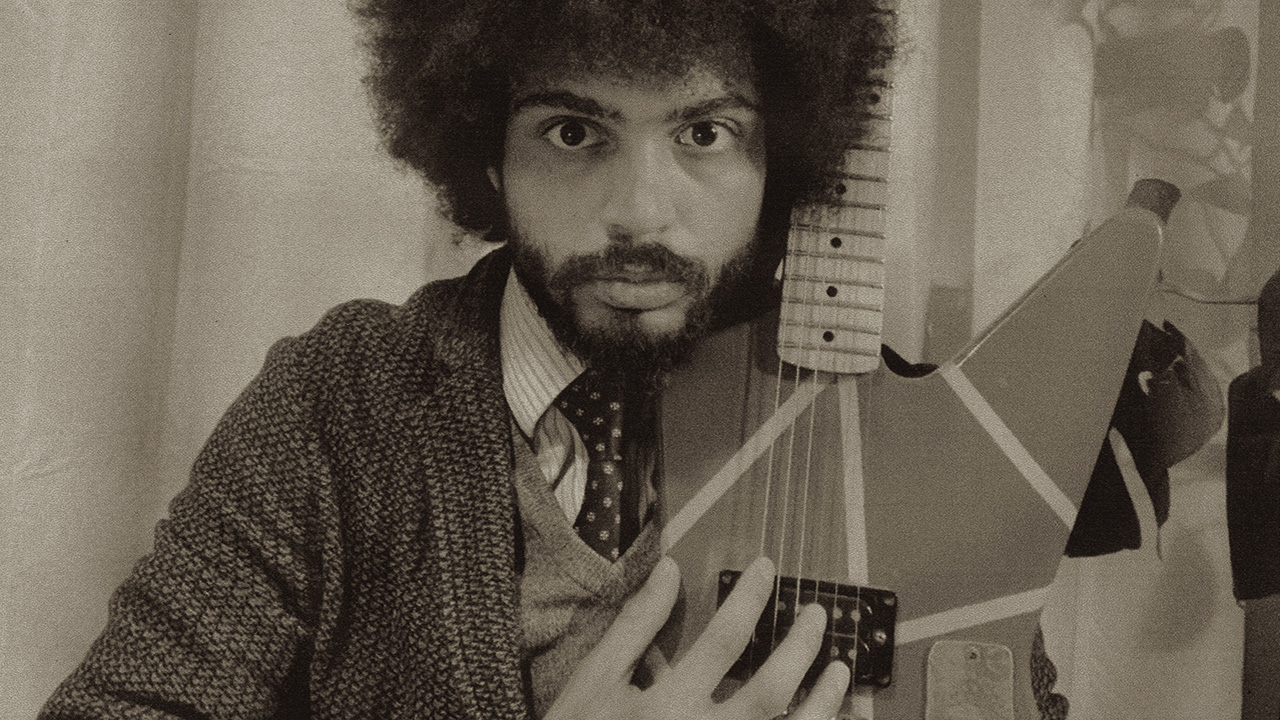
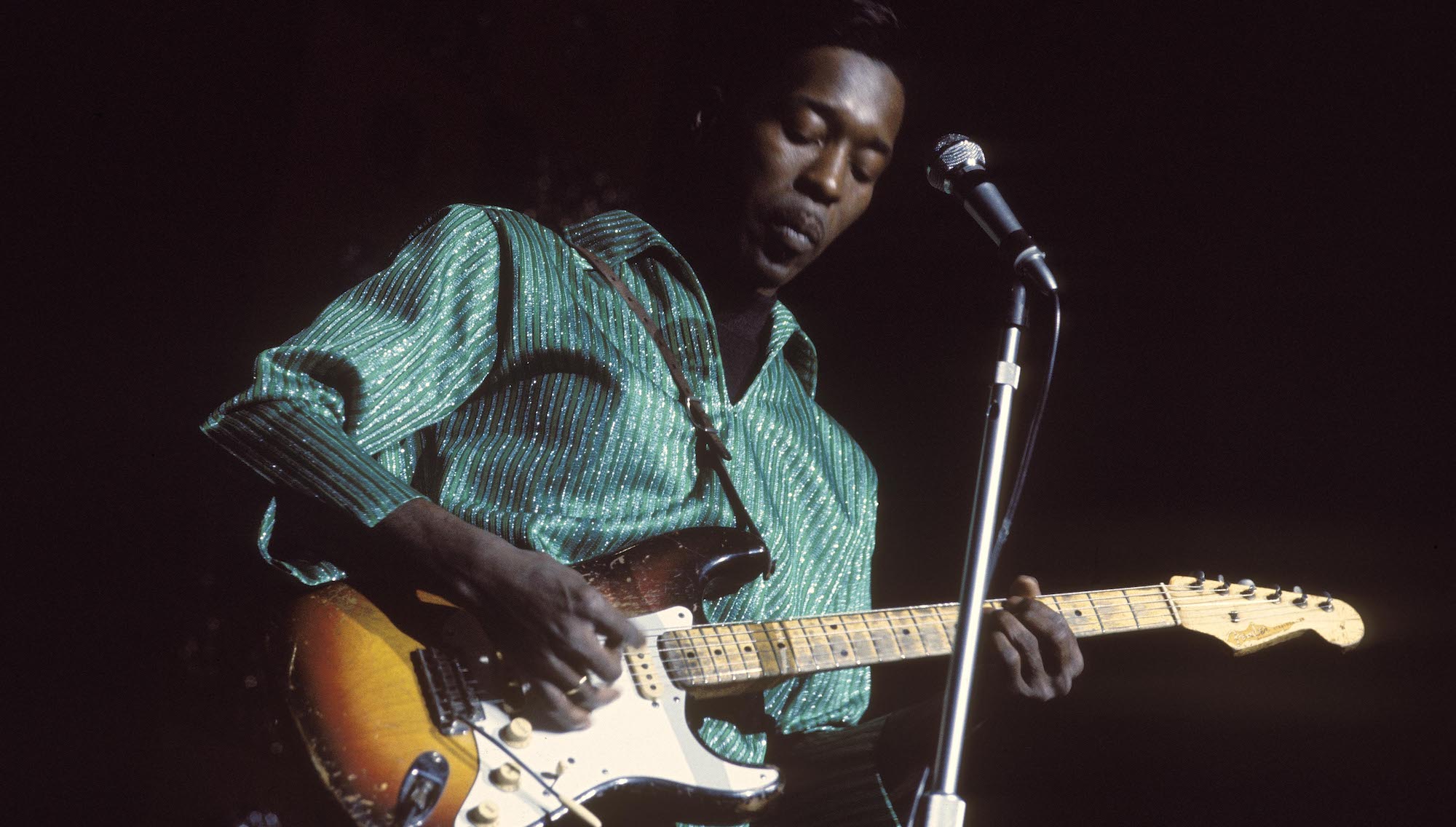
![[from left] George Harrison with his Gretsch Country Gentleman, Norman Harris of Norman's Rare Guitars holds a gold-top Les Paul, John Fogerty with his legendary 1969 Rickenbacker](https://cdn.mos.cms.futurecdn.net/TuH3nuhn9etqjdn5sy4ntW.jpg)

